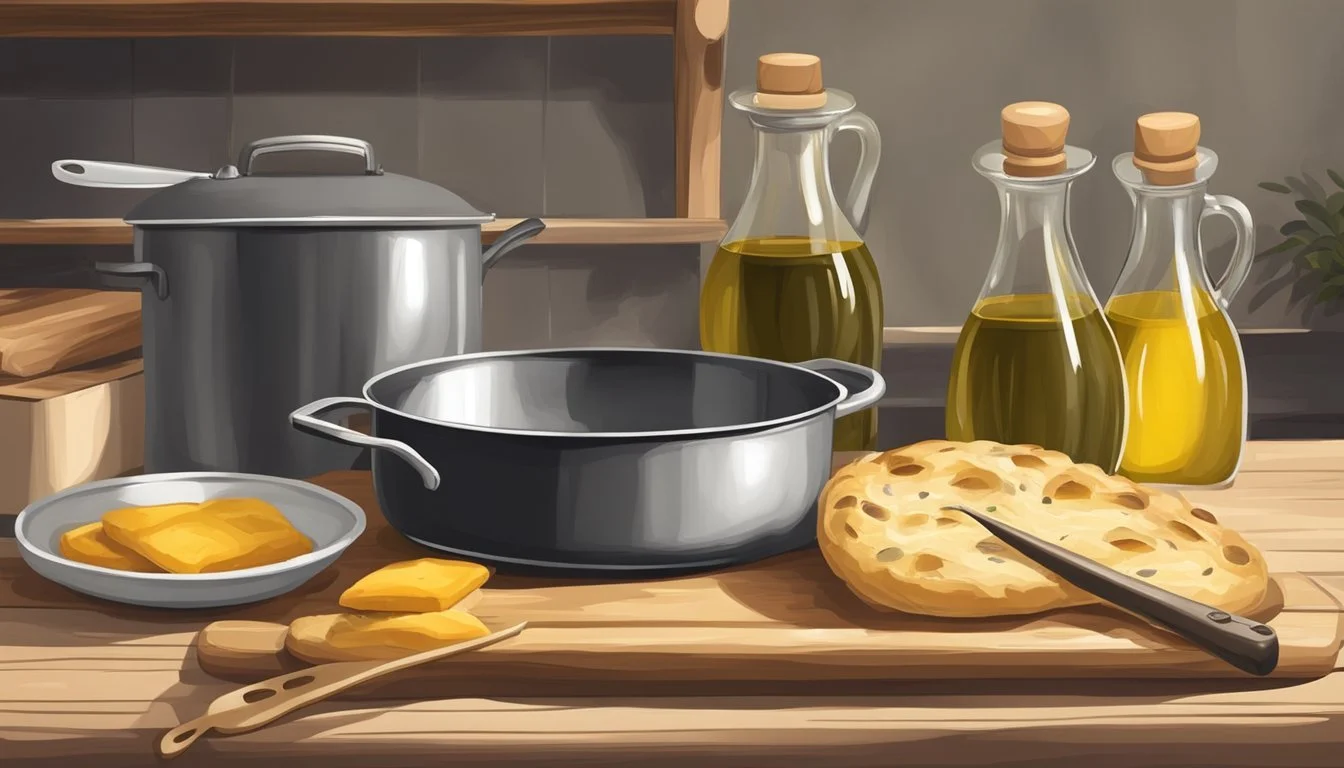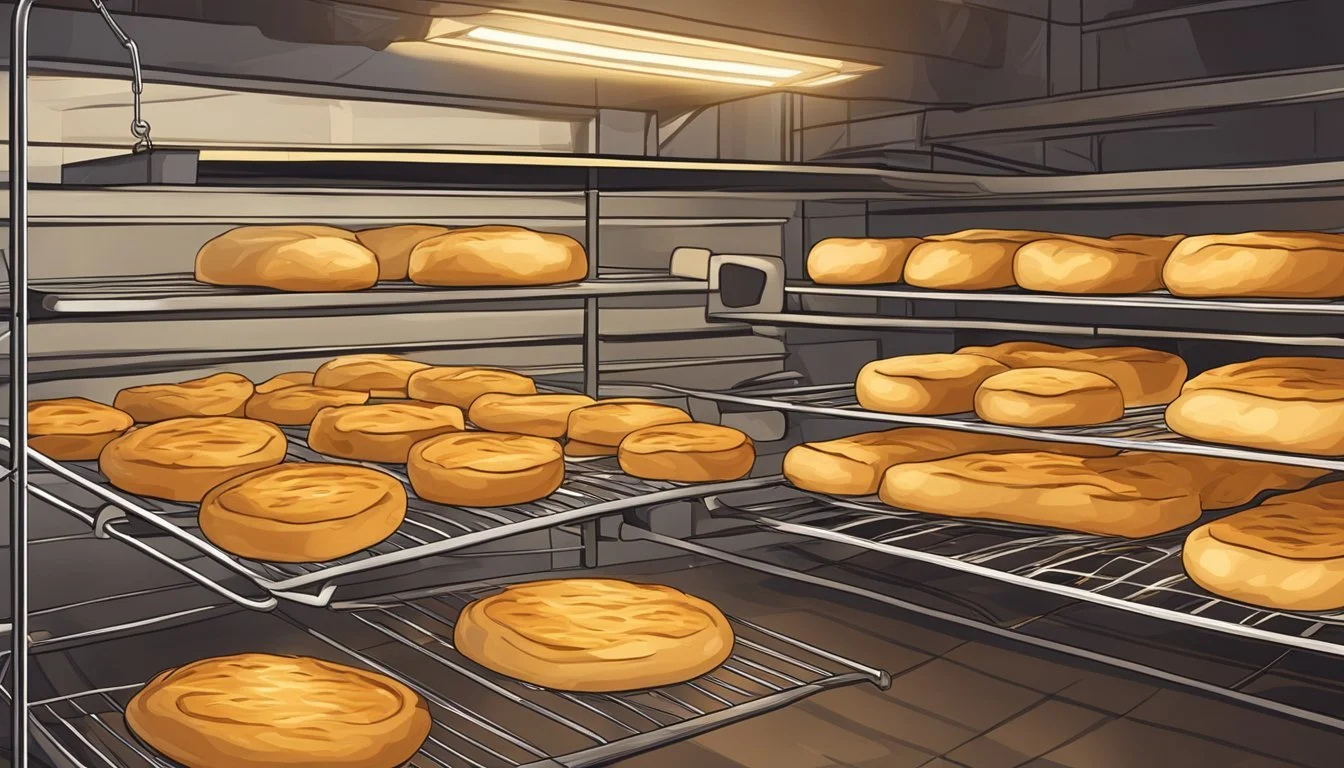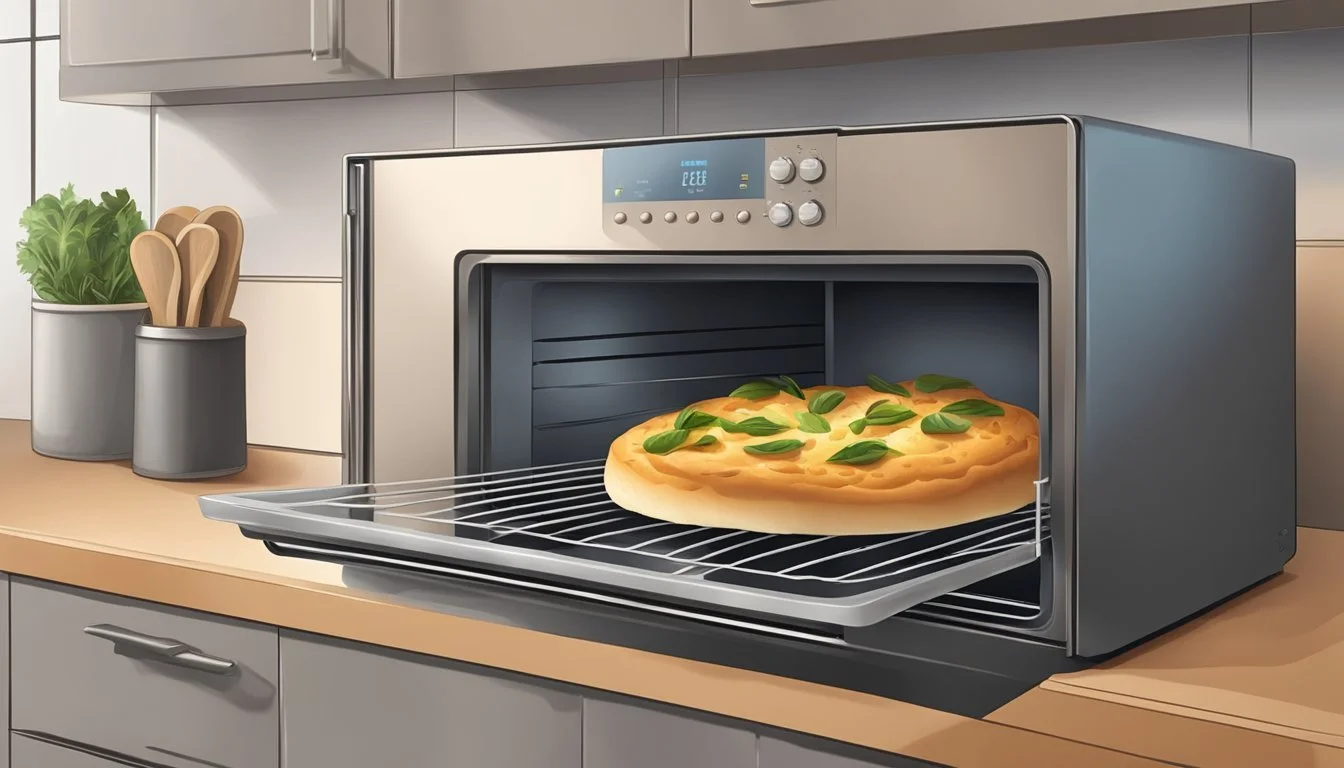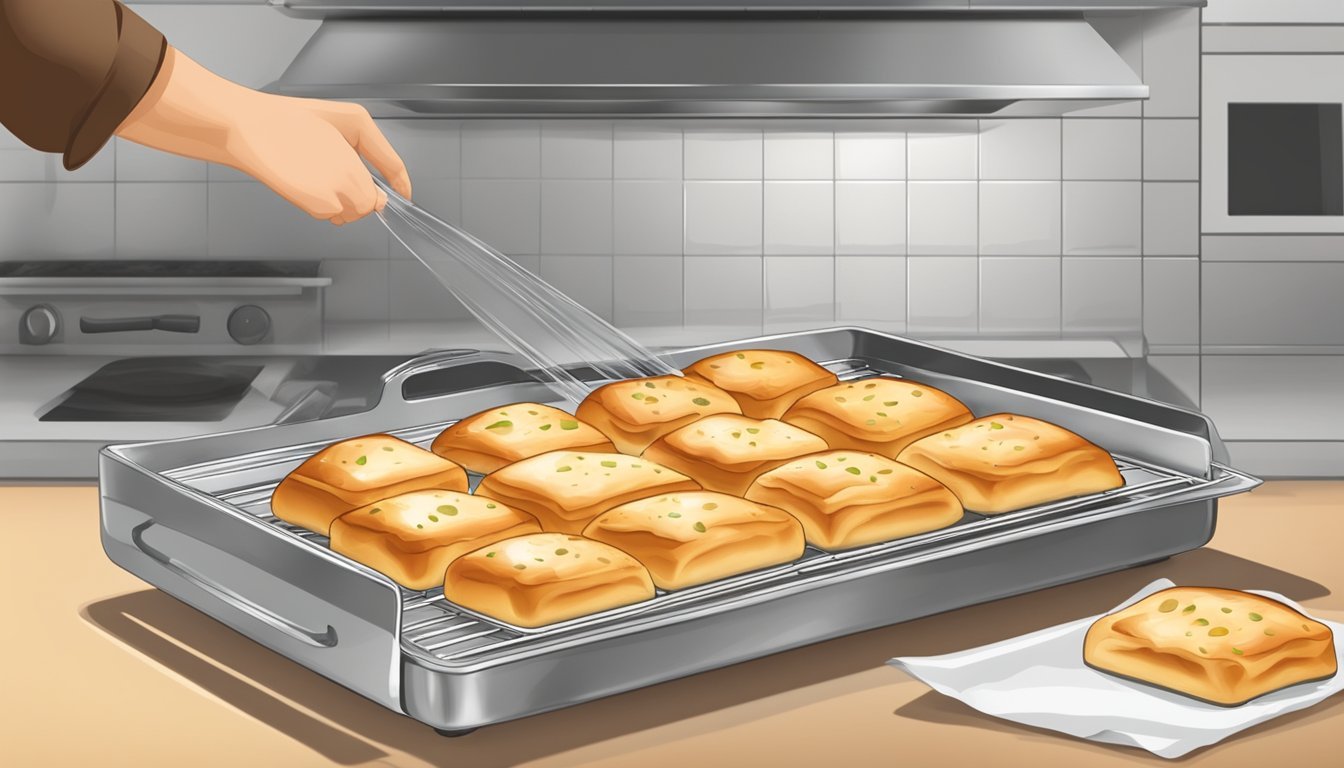How to Reheat Focaccia
Best Methods for Perfect Texture and Flavor
Focaccia, the delectable Italian flatbread known for its fluffy interior and crispy crust, is a delight fresh out of the oven. Yet, enjoying leftover focaccia can be equally satisfying if reheated properly. To reheat focaccia to perfection, the oven method stands out—preheat your oven to around 350°F, wrap the focaccia in aluminum foil, and heat for 10-15 minutes until it is warm throughout.
Other effective methods include using a microwave, toaster, or stovetop skillet. For microwaving, cover the focaccia with a damp paper towel and heat for 30 seconds. When using a toaster, simply toast a slice for 1-2 minutes. On the stovetop, heat a skillet over medium heat, place the focaccia inside, cover with a lid, and heat for 3-5 minutes, flipping halfway through.
These simple techniques ensure that your day-old focaccia maintains its crisp texture and moist interior. Reheating focaccia doesn’t have to compromise its delicious qualities, making it a versatile bread choice for multiple meals.
Understanding Focaccia
Focaccia is a type of Italian bread known for its rich flavors and versatile use in meals.
At its core, focaccia bread is made from a simple dough consisting of flour, yeast, salt, and water. Olive oil is essential to achieving its signature texture and taste. The dough is generally well-hydrated, making it light and airy.
Herbs like rosemary often feature prominently in traditional recipes. They add a fragrant aroma that complements the bread’s subtle saltiness.
Olive oil is not just part of the dough but is also generously brushed on top before baking. This contributes to the focaccia's golden, crispy exterior.
Textures in focaccia vary from a crunchy, slightly chewy crust to a soft, pillowy inside.
When making homemade focaccia, bakers often add toppings like cherry tomatoes, olives, or even caramelized onions to enhance flavors.
In Italy, this bread is often served as a side dish, used as a sandwich base, or enjoyed on its own with a sprinkle of salt and herbs. Cooking methods and local variations can differ, reflecting a range of textures and flavors that make focaccia a beloved staple.
Benefits of Proper Reheating
Reheating focaccia correctly can greatly enhance its textures and flavors. The process revitalizes the crispness and creates a crispy crust. This improves the overall eating experience and mimics the texture of freshly baked focaccia.
Proper reheating also helps retain the focaccia's moist interior. This keeps the bread from becoming dry, maintaining the airy texture that is a hallmark of good focaccia.
Flavors are also preserved better with proper reheating. The heat helps to redistribute the oils and other ingredients, intensifying the taste and ensuring that the focaccia remains flavorful and delicious.
Steps for Reheating Focaccia:
Preheat the oven to a suitable temperature.
Wrap the focaccia in aluminum foil or place it on a skillet.
Heat evenly by occasionally flipping or rotating.
Benefits of each method include a more chewy texture and enhanced overall quality.
In summary, taking the time to reheat focaccia properly ensures that you enjoy the full spectrum of its intended characteristics.
Preparation for Reheating
To reheat focaccia properly, certain steps should be taken to ensure the bread retains its texture and flavor.
**1. Slice the Focaccia: It's recommended to slice the focaccia into individual portions before reheating. This allows for even warming and prevents the edges from becoming overly crispy while the center remains cold.
**2. Wrap in Aluminum Foil: For oven reheating, wrap each sliced focaccia piece in aluminum foil. This helps to retain moisture and prevents the bread from drying out.
**3. Use a Paper Towel: If you opt for a microwave, covering the focaccia with a damp paper towel will help keep it moist. Place the sliced focaccia on a microwave-safe plate and cover it with the damp paper towel before heating.
**4. Sprinkle Water: For toaster oven or skillet reheating, sprinkling a few drops of water on top of the focaccia can help maintain its moisture. This step is crucial to avoid a hard, dry crust.
**5. Preheat your Appliance: Whether using an oven, toaster oven, or skillet, preheating is essential. For an oven, set the temperature between 350°F to 375°F. For a toaster oven, 3-5 minutes is typically sufficient. For skillet use, a medium heat setting works best.
With these preparatory steps, leftover focaccia will be ready to be reheated to perfection, ensuring a crispy exterior and a soft, flavorful interior.
Oven Reheating Method
Using an oven is widely regarded as the best method to reheat focaccia. This technique helps maintain the bread's crisp crust and soft interior, ensuring that it comes out tasting fresh.
Preheating the Oven
The first step is to preheat your oven to 375°F (190°C). A properly preheated oven ensures that the focaccia heats evenly. Preheating to the correct temperature is crucial, as it allows the crust to become crispy without drying out the inside of the bread. Allow the oven to reach the desired temperature before placing the bread inside.
Baking Sheet Technique
Place the focaccia on a baking sheet lined with parchment paper. This method helps distribute heat evenly and prevents the bread from sticking to the pan. Position the baking sheet in the middle rack of the oven for optimal heat circulation. Baking the focaccia on a sheet also makes it easy to handle and remove from the oven once it's done.
Using Aluminum Foil
To keep the focaccia moist, wrap it in aluminum foil. This technique locks in moisture, preventing the bread from becoming too dry. Lightly wetting the bread before wrapping it can help restore some of its original softness. For a crispy top, open the foil for the last 2-3 minutes of reheating. The foil should cover the bread loosely to allow for some airflow.
Even Heating Tips
For even heating, it's important to turn the focaccia halfway through the reheating process. This ensures that all parts of the bread are heated uniformly. Avoid overcrowding the oven, as this can lead to uneven temperatures. If heating multiple pieces, leave some space between each piece to allow for proper air circulation.
Toaster Oven Method
Preheating the toaster oven to 350°F (175°C) is essential for warm and crispy focaccia. It ensures even heating from the start.
Once preheated, place the focaccia directly on the rack or on a baking sheet. Cover loosely with aluminum foil to retain moisture.
Heat the focaccia for about 5-10 minutes. Timing may vary, so check periodically to avoid overcooking.
For a crispier crust, remove the foil during the last 2-3 minutes of heating. This allows the bread to achieve that delightful crunch.
Tip: Always keep an eye on the toaster oven to prevent burning. Appliances vary, and slight adjustments might be needed.
The toaster oven method is efficient, providing a quick and effective way to reheat focaccia while maintaining its texture and flavor.
Microwave Reheating Strategy
Using a microwave to reheat focaccia requires careful attention to ensure the bread remains warm and tasty without becoming rubbery. This strategy involves selecting the right plate, retaining moisture, and preventing an undesirable texture.
Microwave-Safe Plate Use
It's essential to use a microwave-safe plate when reheating focaccia to avoid any health hazards or damage to the appliance. Ceramic, glass, and certain plastics are safe options. Ensure the plate is clean and dry before placing the focaccia on it. By doing this, the bread heats evenly and prevents any hot spots that could cause uneven warming or potential burns.
Moisture Retention Techniques
One of the main challenges of reheating focaccia in the microwave is keeping it moist. To prevent it from drying out, sprinkle a few drops of water over the top of the focaccia before microwaving. Alternatively, covering the piece of bread with a damp paper towel can help maintain its moisture. These techniques create a small amount of steam during the reheating process, ensuring the focaccia stays soft and pleasant.
Avoiding Rubberiness
Microwaving focaccia for too long can result in a rubbery texture. To avoid this, start by reheating the bread for 10 to 15 seconds on medium power. Test the temperature and continue heating in small increments of 5 to 10 seconds, if needed. Monitoring the bread during each interval helps prevent overcooking, ensuring it remains tender and flavorful instead of becoming unappetizingly tough.
Stovetop Reheating Technique
This method focuses on using a skillet to reheat focaccia, maintaining its moist texture and rich flavors. It involves heating the skillet, utilizing olive oil, and covering the bread to trap moisture.
Skillet Method
To start, place a skillet on the stove over medium heat. Allow the skillet to warm up for a few minutes until it's evenly heated.
Next, place the focaccia directly in the skillet. You might need to cut it into manageable pieces if it doesn't fit. Allow it to heat up for about 2-3 minutes on each side. This should be enough to make the bread warm and slightly crispy without overcooking. Monitor closely to avoid burning the bottom.
Olive Oil Utilization
For an authentic touch and enhanced flavor, drizzle a small amount of olive oil into the skillet before adding the focaccia. The olive oil not only prevents the bread from sticking but also enhances its flavor.
Distribute the oil evenly across the skillet to ensure each part of the focaccia absorbs the rich, aromatic oil. After placing the focaccia in the skillet, let the oil work its magic, adding a beautiful crispiness to the crust. This method preserves the bread’s intended taste and texture.
Covering to Retain Moisture
To prevent the focaccia from drying out, it's important to cover the skillet while reheating. Use a lid that fits well, or cover the skillet with aluminum foil if necessary.
Covering the skillet traps the steam, which keeps the bread moist. This technique simulates the effects of baking without turning on the oven. Occasionally lift the lid to check the focaccia and make sure it's warming evenly.
In summary, using a skillet on the stove with a touch of olive oil and proper covering ensures the focaccia remains moist and flavorful. Each step is simple but crucial for achieving a reheated focaccia that's close to its freshly baked state.
Alternative Reheating Methods
For those who prefer different ways to reheat focaccia, here are some effective alternatives. We'll be exploring the use of a toaster and an air fryer to ensure your focaccia is warmed perfectly without compromising its texture.
Using a Toaster
Toasting focaccia is a simple and efficient method. To start, place the focaccia slices in the toaster slots. Ensure the toaster is set to a medium setting.
This prevents burning while warming the bread thoroughly. A key point is to monitor the toasting process closely.
For optimal results, use a toaster with wider slots to accommodate thicker slices of focaccia. This method works well when you need a quick reheating option. Typically, toasting takes around 2-4 minutes depending on the toaster’s power and the thickness of the focaccia.
If your toaster has a bagel setting, using it can help focus the heat on the cut side, keeping the outer crust from over-toasting.
Employing an Air Fryer
Reheating focaccia in an air fryer is another excellent option. Start by preheating the air fryer to 350°F (175°C).
Place the focaccia in the air fryer basket. Arrange the pieces in a single layer to ensure even heating.
The reheating time is roughly 3-5 minutes. It's important to check the focaccia halfway through to avoid overcooking. This ensures the bread gets a crisp exterior while the inside remains soft.
If the focaccia slice is particularly thick, it might require an additional minute or two. Remember, the hot circulating air cooks the bread more evenly, making the air fryer a practical choice for reheating without drying out the focaccia.
Supplementary Tips for Reheating
Preventing Dryness
To avoid over-drying your focaccia, sprinkle a few drops of water on the bread before reheating. This helps maintain moisture during the heating process.
Wrapping Techniques
Wrap in Aluminum Foil: Wrapping focaccia in aluminum foil retains moisture, preventing dryness. It is especially important when using an oven.
Enhancing Flavors
Add a pat of butter on top before reheating for a richer flavor. It melts into the bread, giving an extra layer of taste.
Keeping It Crispy
For a crisper crust, unwrap the foil during the last 2-3 minutes in the oven. This exposes the focaccia directly to the heat.
Using Seasonings
Sprinkle with seasonings like rosemary, sea salt, or garlic powder. This not only enhances the flavor but also revives the taste of day-old focaccia.
Applying Toppings
Add toppings such as extra cheese or fresh tomatoes before reheating. This livens up the bread and adds a fresh twist.
Skillet Tips
For a quick reheat, use a medium-heat skillet. Cover the pan to allow steam to keep the focaccia moist while it reheats.
Avoiding Over-Heating
Always monitor the focaccia while reheating to avoid overcooking, which can lead to dryness. Check the bread frequently.
By employing these supplementary tips, you can make sure your reheated focaccia is as delicious as when it was first baked.
Storing Focaccia for Freshness
To store focaccia effectively, ensure it cools completely before putting it away. Storing warm focaccia can lead to moisture buildup and spoilage.
Best Practices
Cool Completely: Let the focaccia cool at room temperature.
Wrap Properly: Wrap the focaccia tightly in aluminum foil or plastic wrap.
Airtight Containers: Place the wrapped bread in an airtight container to prevent it from drying out.
Short-Term Storage
For short-term storage, keeping focaccia at room temperature is sufficient.
On the Counter: Store in a cool, dry place.
Duration: Best consumed within 2 days.
Long-Term Storage
For longer storage, freezing focaccia is recommended.
Freezing Steps:
Cool and Wrap: Follow the cooling and wrapping instructions.
Airtight Container: Place the wrapped focaccia in a freezer-safe airtight container.
Label: Label with the date for reference.
Defrosting:
Remove from the freezer.
Thaw at room temperature before reheating.
Tip: Slicing focaccia before freezing can make thawing and reheating easier.
By following these guidelines, the freshness and taste of focaccia can be maintained, ensuring every bite is as good as the first.
Serving Suggestions
Focaccia shines as a versatile dish, perfect for various dining scenarios. Here are some serving ideas to elevate your meal.
Accompaniments: Pair reheated focaccia with olive oil and balsamic vinegar for dipping. Add a sprinkle of sea salt and cracked pepper for extra flavor.
Appetizers: Serve focaccia as part of an appetizer platter with cheeses, meats, and olives. It's excellent alongside bruschetta or tapenade.
Salads: Include focaccia with fresh salads like a Caprese with tomatoes, basil, and mozzarella. It also goes well with a Caesar or Greek salad for a satisfying crunch.
Soups: Combine focaccia with soups such as minestrone, tomato bisque, or butternut squash. The bread soaks up the soup's flavors, creating a hearty experience.
Pasta Dishes: Focaccia complements pasta dishes like spaghetti Bolognese, fettuccine Alfredo, and pesto pasta. It’s perfect for mopping up sauces and adding texture to your meal.
Cheesy Options: For a cheesy twist, top focaccia with mozzarella, parmesan, or provolone before reheating. This adds a delightful layer of flavor and richness.
Keep these suggestions in mind when serving focaccia to provide a well-rounded and enjoyable dining experience.
Conclusion
Reheating focaccia doesn't have to be a challenge.
Oven
Preheat to 375°F (190°C).
Wrap focaccia in aluminum foil.
Bake for 10-15 minutes until heated through.
Skillet
Use medium heat.
Place slices without adding oil.
Heat for 3-5 minutes, flipping halfway.
Results
Using these methods, focaccia retains its desired texture, making it enjoyable just like when it was freshly baked.
Achieving crisp crusts with moist interiors is possible, ensuring a satisfying reheated focaccia experience.









